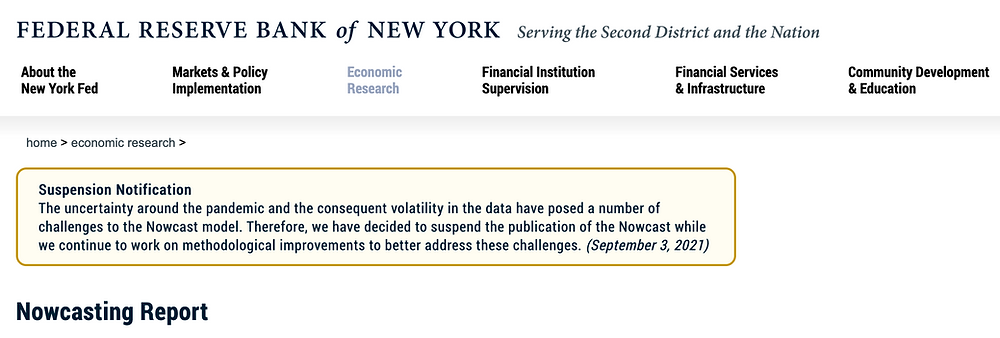Data-driven Central Banking
Commentary by Kathleen Tyson - October 26, 2021
A leader in the Economist this week is calling for 'A real-time revolution in economics' to 'make the world better off'. Certainly better and more timely data is needed, and many central banks are experimenting with nowcasting, but whether we need a revolution in economics is questionable. Economics develops models of economies that are used for relative measurement, forecasting and other purposes, so is necessarily reliant on historic data.
What the Economist is calling for is more nowcasting to inform policy development. Because economic models lose predictive accuracy in times of rapid change or instability, many economic models developed pre-pandemic have stopped working very well. There are increasing gaps between model predictions and real-world outcomes. This is where nowcasting can fill the gap and inform better economics and policy development.
But nowcasting is new in economics and is not without challenges. More and more data is now available, but its relevance to economic forecasting is not established. Economists still have to choose what data variables to collect for nowcast models and how to weight them. Policy makers still have to interpret what the result may mean for the economy and policy. And only time will tell whether nowcasts are accurate for either measuring the economy or signalling a need for a change of policies.
There are no global standards for nowcasts yet. There is no global concensus on what metrics are most useful in measuring or predicting economic activity and growth. And there is no way at all to measure how central bank policy actions in respect of interest rates or liquidity facilities will filter through to the real economy, if they do at all. Transmission of policy changes at the central bank through primary dealers to financial sector to financial assets happens quickly, but transmission to the real economy is uncertain and involves a long lag time. Transmission was uncertain and poorly evidenced even before the Great Financial Crisis, and is no better evidenced now. Most increases in lending to the real economy during the pandemic were backed by government directives. Adjusting policy based on real-time observations may not be appropriate unless central banks have different tools or methods for facilitating or tracking transmission to the private non-financial sector.
We are only just now realising that interest rate cuts below some threshold may actually be contractionary, suppressing real-economy investment and growth. Bank intermediation of credit to non-financial corporations was in steady decline in many OECD economies pre-pandemic, despite ZIRP or near-ZIRP base rates and more than USD 23 trillion in central bank balance sheet growth. Corporations have turned to bond markets or non-bank finance in many developed markets. In many EMDEs non-banks have been the force enabling commerce between people and small businesses that drives stable and sustainable economic growth. Data that informs central bank policies needs to recognise the limits of central bank reach and transmission.
The Federal Reserve Bank of New York started publishing a Nowcasting Report on its website from Q4 2020 but stopped updating it in September 2021 to go back and do further work on the model. This illustrates the challenges for even the most advanced central banks. Data capacity and data literacy are not globally equitably distributed, even where global data is available. Central banks will need help developing nowcast tools and interpreting them for domestic policy.

Here at Pacemaker.Global we are developing some nowcasting tools for the central bank toolkit. We recognise that it is an evolving area where experimentation and collaboration will be needed to make the tools useful. Still, it's good to have the Economist validate the need for better data and tools for 'better, timelier and more rational decision-making'.